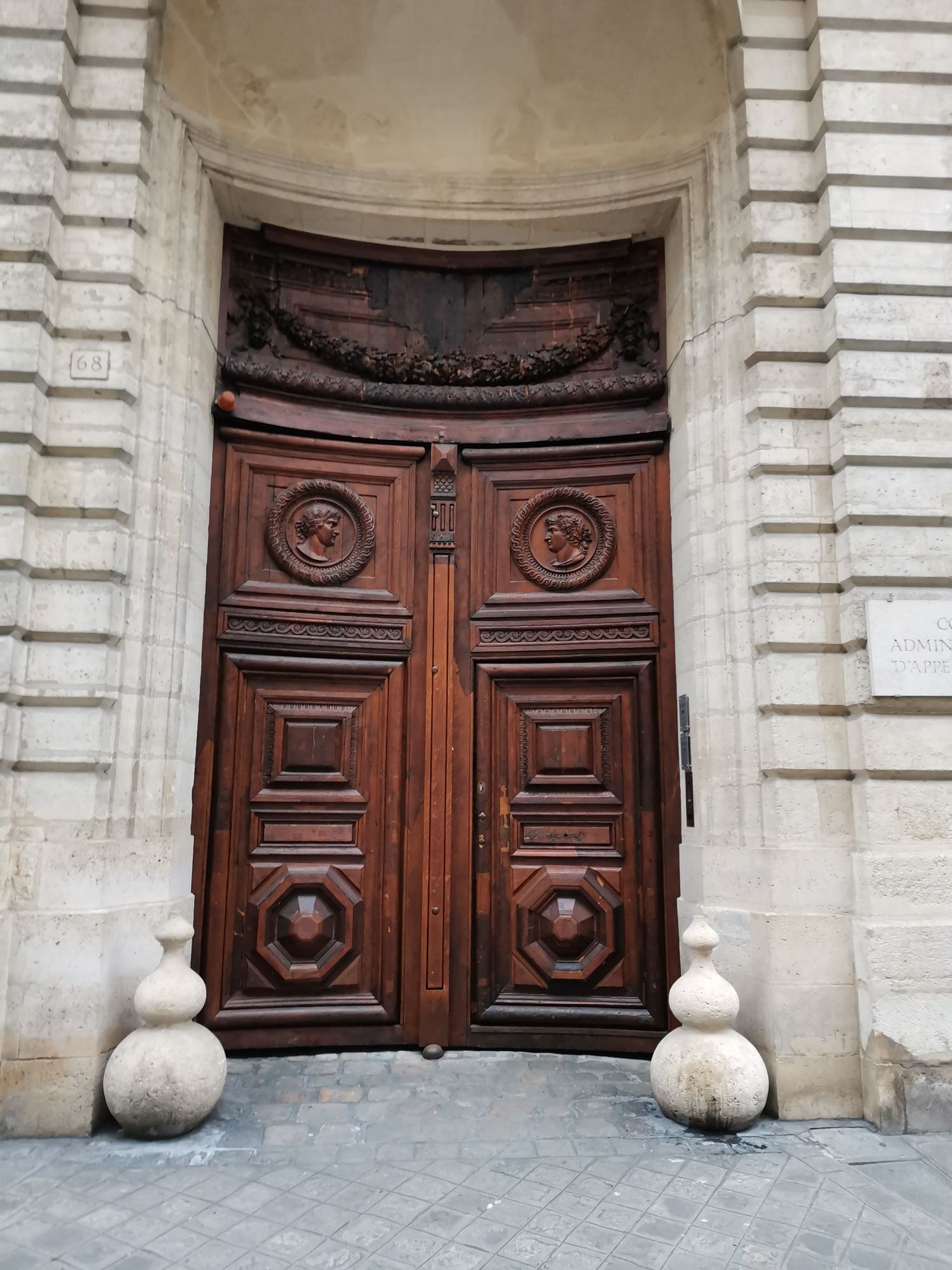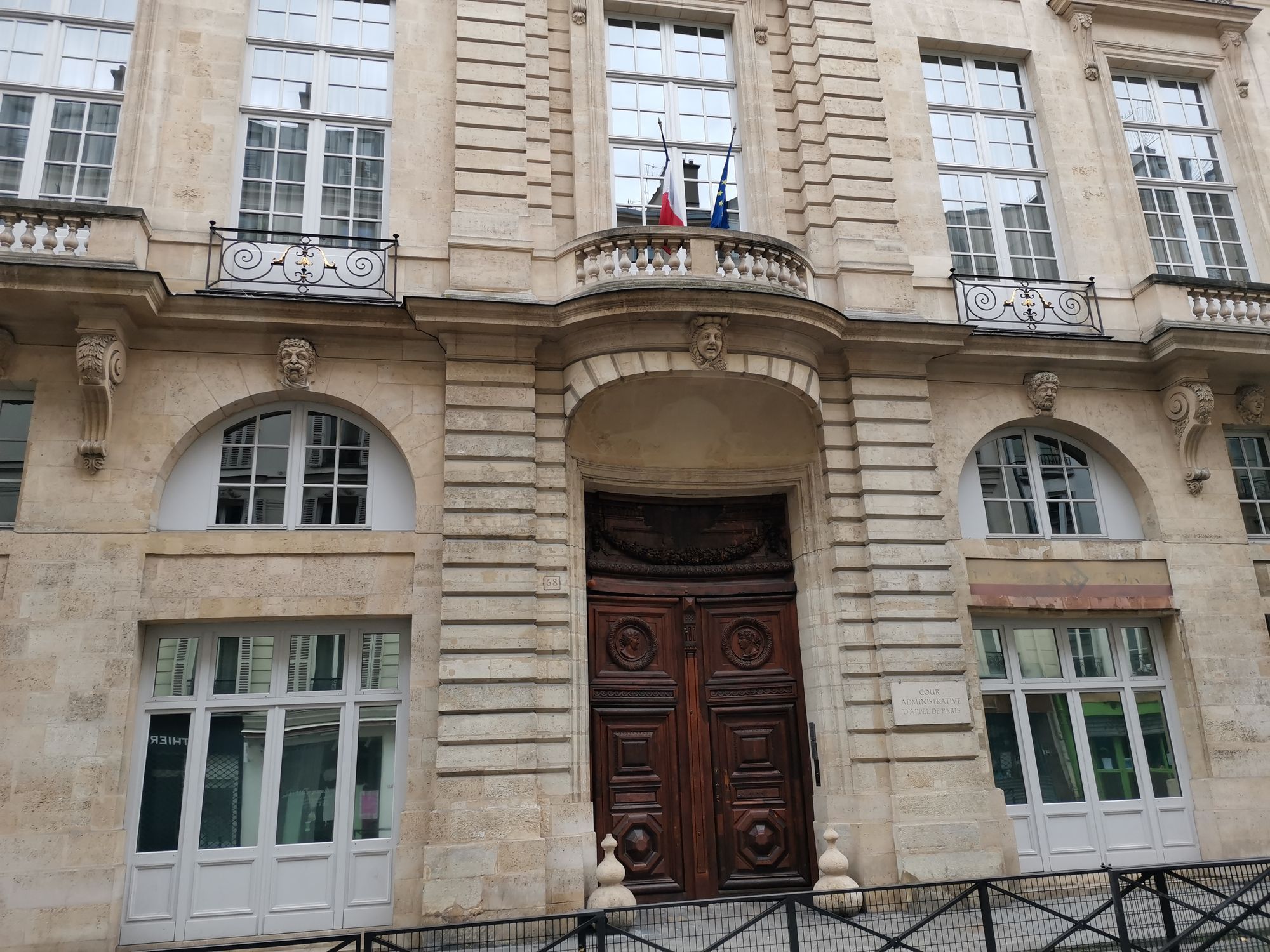L'Hôtel de Beauvais
 Where is the Hôtel de Beauvais? How do I get to the Hôtel de Beauvais?
Where is the Hôtel de Beauvais? How do I get to the Hôtel de Beauvais?What was the original site of the Hôtel de Beauvais?
In what year was the Hôtel de Beauvais built? Who commissioned it?
Who were the architects of the Hôtel de Beauvais? What is the history of the building?
Which personalities have stayed at the Hôtel de Beauvais?
Who is the current owner of the Hôtel de Beauvais and what is its current use?
What are the architectural features of the Hôtel de Beauvais?
Is the Hôtel de Beauvais part of our guided tours?
Where is the Hôtel de Beauvais? How do I get to the Hôtel de Beauvais?
The Hôtel de Beauvais is located at 68 rue François-Miron, 75004 Paris, in the heart of the Marais district. It currently houses the Cour administrative d'appel de Paris.
[Access by public transport
Metro: Saint-Paul (line 1) or Pont Marie (line 7)
Bus: 69, 76 or 96, stop Rue de Jouy or Rue Vieille du Temple
What was there originally on the site of the Hôtel de Beauvais?
In the early 13th century, this was the site of the town house of the Cistercian abbey of Chaalis (Oise). Along rue François Miron, in the cellars of the Hôtel de Beauvais, a large rib-vaulted room probably used as a wine cellar still remains from this period. A second exit from the house was located at 12 rue de Jouy, where 15th-century cellars still exist. At the end of the 15th century, the house was transformed into a hostelry under the sign of Le Faucon.
In what year was the Hôtel de Beauvais built? Who commissioned it?
 In the 17th century, the Maison du Faucon was bequeathed to Marie-Madeleine de Castille, wife of Nicolas Fouquet, Louis XIV's Superintendent of Finances.
In the 17th century, the Maison du Faucon was bequeathed to Marie-Madeleine de Castille, wife of Nicolas Fouquet, Louis XIV's Superintendent of Finances. Catherine-Henriette Bellier, known as "Cateau-la-Borgnesse", first chambermaid to Queen Anne of Austria and Baroness de Beauvais, was also the first mistress of French King Louis XIV, which earned her a privileged position with the King and Queen Anne of Austria.
In 1654, the Beauvais family bought the three houses on the site of today's Hôtel de Beauvais: the Maison du Faucon, the house next door with the Saint-Claude image and the house with the Soufflet sign on rue de Jouy. They had the three houses demolished and asked Antoine Le Pautre to build them a grand Hôtel in their place.
Who were the architects of the Hôtel de Beauvais? What is the history of the building?
The Hôtel de Beauvais was built between 1656 and 1660 by architect Antoine le Pautre (1621-1679), who transformed the narrow, irregular polygonal plot into a sumptuous residence.
The dwelling was located on the street rather than between courtyard and garden, as was customary at the time. The stores, also facing the street, were topped by an entresol enclosed by four arcades. The monumental main facade was distinguished by fine sculpted decoration. The central front featured a triangular pediment on the top floor, carved with the Queen's coat of arms, and supported by two Victories, the work of Nicolas Legendre assisted by Pierre Hutinot.
The upper storey featured balconies with stone balusters, providing a view of the processions passing in the street. It featured seven tall rectangular windows. The top floor featured six small square windows.
The Hôtel de Beauvais was bought in 1686 by Pierre Savalette, a notary, who had it converted in 1704 by Robert de Cotte. The monumental pediment was replaced by a window, and some of the sculptures were removed. Jean Orry, King's Counselor, lived in the Hôtel from 1706 to 1719. His daughter, Louise-Elisabeth, and her husband commissioned the architect Jean-Baptiste-Augustin Beausire to refurbish the building between 1730 and 1739 - during which time new interior fittings were created.
In 1740, the Hôtel de Beauvais passed to Philibert Orry, Minister of State and Director of the King's Buildings, then in 1747 to his heir Jean Orry de Fulvy, Councillor of State, who added a new wing overlooking the terrace to the southwest.
In 1755, the Hôtel de Beauvais became the residence of Count van Eyck, Bavaria's envoy extraordinary to Paris. During the French Revolution, the Hôtel was confiscated from van Eyck's daughters and sold in 1799 to Armand-Jean-Baptiste Maurin, who added a second floor. Much of the interior decoration was removed, and the number of rooms increased for greater profitability. In 1810, the hotel passed to the Laumière family, until the end of the 19th century.
Which famous personalities stayed at the Hôtel de Beauvais?
On August 26, 1660, after the marriage of Louis XIV and Maria Theresa of Austria in Paris, on the Place du Trône, now the Place de la Nation, Queen Anne of Austria, the Queen of England and the Court watched from the balconies of the Hôtel de Beauvais as the royal couple passed in triumph on their way to the Louvre.
Between November 1763 and April 1764, the Hôtel de Beauvais was the home of Wolfgang Amadeus Mozart (1756-1792), who stayed there with his parents and sister during his first stay in Paris. At the age of 7, Mozart played at the Court of Versailles, before Louis XV, who was impressed by his virtuosity.
Who currently owns the Hôtel de Beauvais and what is its current use?
In 1943, the Hôtel de Beauvais became the property of the City of Paris. It was restored between 1999 and 2003 by Bernard Fonquernie, chief architect of the Monuments Historiques.
The restoration was made possible by drawings from the Robert de Cotte collection, the estimate for the 1730 work and Beausire's 1739 description of the work.
Since 2004, it has been the seat of the Cour administrative d'appel de Paris.
What are the architectural features of the Hôtel de Beauvais?
In the 18th century, the balconies overlooking the street were made of stone and wrought iron. Below the stone balconies are brackets with acanthus leaf ornaments.
The concave wooden porte cochère is carved with two medallions on the right and left, with leaf garlands at the top. Behind the door, a passageway leads to a circular vestibule framed by eight Doric columns, above which is a frieze of triglyphs and metopes adorned with bucrania, warrior attributes and the initials P C H B for Pierre Catherine Henriette Bellier Beauvais, the former owners. Four Corinthian columns precede a monumental stone staircase, with a handrail of openwork tracery adorned with sculptures of eagles, children, masks, sphinxes and trophies of arms, signed by Martin Desjardins. At the other end of the courtyard, the façade is concave, forming an interplay of curves with the rotunda of the vestibule - giving the courtyard of the Hôtel the appearance of a theater stage.
The entablature on the first level features lions' heads alternating with rams' heads, an allusion to the name of the former owner, Catherine Bellier.
Is the Hôtel de Beauvais part of our guided tours?
Yes, some of our tours include the façade of this magnificent Hôtel de Beauvais.
Page written by the guide Roxana
Summary return of the private mansions of the Marais